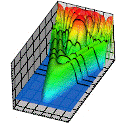Department of Physics and Astronomy: Publications and Other Research

Anthony F. Starace Publications
Document Type
Article
Date of this Version
November 2000
Abstract
Atomic processes in the presence of intense fields continue to attract a great deal of attention [1-3]. Key goals of research in this area are to increase the intensities and frequencies of coherent light produced in these processes. In two recent works [4,5] we have demonstrated theoretically the possibility of controlling intense laser-atom interaction processes by employing strong, but experimentally feasible, static electric or magnetic fields. Thus, in Ref. [4] we demonstrated how a strong static electric field may induce a high-energy plateau for scattered x-ray photons in laser-assisted, x-ray-atom scattering in which the incident x-rays were assumed to have an energy of 50 eV. The scattered x-rays were shown to have energies up to well over 200 eV, making such a process an attractive one for realizing coherent x-rays in the "water window" [between the K shell absorption edges of C (284 eV) and 0 (532 eV)], which would have important applications to imaging living biological structures by means of x-ray holography [6]. In Ref. [5], we demonstrated control of high-harmonic generation (HHG) by a linearly polarized laser field using a uniform static magnetic field parallel to the laser polarization. We predicted that particular values of the magnetic field can increase harmonic intensities by orders of magnitude. Our classical orbit calculations showed that these magnetic-field-induced intensity revivals occur when the return time for laserdriven motion of the electron back to the origin is a multiple of the cyclotron period for motion perpendicular to the laser polarization direction. We present here further results [7-9] on using strong electric and magnetic fields to control these two intense laser-atom processes.


Comments
(AIP Conference Proceedings No. 525, A.I.P., Melville, NY, 2000), pp 602-612. Published by American Institute of Physics; Copyright 2000. Permission to use.